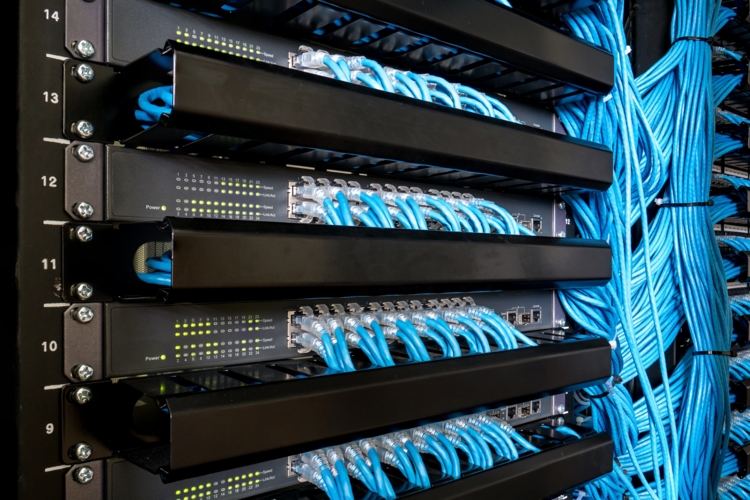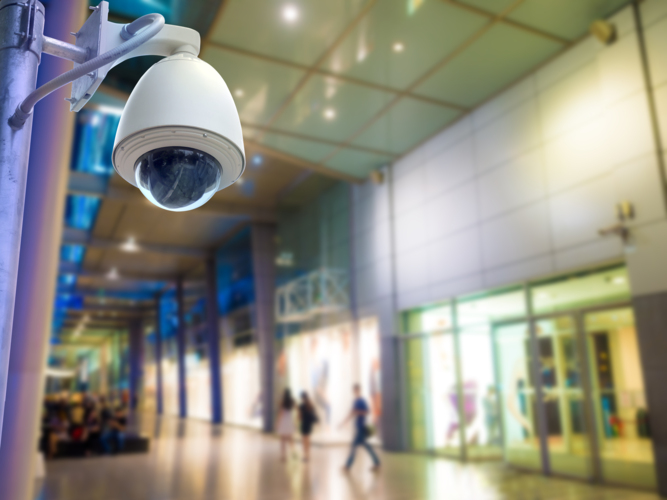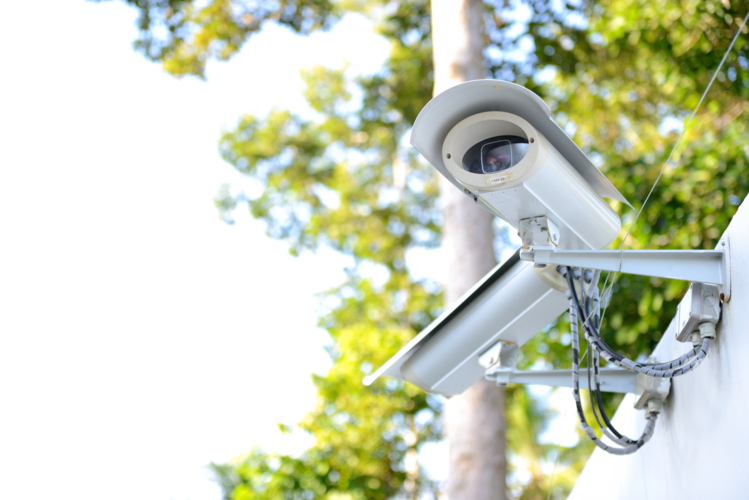Power over Ethernet: What is POE?
Power over Ethernet, commonly known as POE, is a technology that allows electrical power to be transmitted over standard Ethernet cables and data connection to power network devices. This technology has gained popularity recently due to its convenience, cost-effectiveness, and flexibility.
In this article, we will explore the concept of POE, its applications, advantages, and considerations for implementation.
Takeaways
- Power over Ethernet allows electrical power and data transmission over Ethernet cables, eliminating the need for separate power sources for network devices.
- PoE makes network installation more efficient by powering devices like cameras, phones, and access points over existing Ethernet infrastructure.
- PoE technology has evolved through standards development to provide higher power capacity and backward compatibility between equipment from different vendors.
- PoE offers flexibility in device placement, cost savings, and remote manageability but requires additional hardware and has limitations around distances and power levels.
- Industries like hospitality, education, government, and smart cities can leverage PoE to simplify the deployment and powering of critical network devices.
Understanding Power over Ethernet
Power over Ethernet technology allows network cables to carry electrical power, eliminating the need for separate power supplies for network devices such as security cameras, wireless access points, IP phones, and other powered devices.
Using POE, network administrators can simplify network installation, reduce cabling costs, and enhance device placement flexibility.
What is PoE?
POE, short for Power over Ethernet, is a technology that enables power supply and data connection over a single cable. It eliminates the need for separate power supplies or electrical power outlets for network devices, making network installation more accessible and efficient.
Using spare pairs of network cables, POE technology delivers electrical power to network devices, such as security cameras, IP phones, wireless access points, and industrial applications.
What are some common uses of PoE?
Power over Ethernet (PoE) simplifies network installations by powering devices like wireless access points, security cameras, IP phones, retail Point of Sale (PoS) terminals, building access systems, PA systems, LED lights, VDI terminals, and digital signage over a single Ethernet cable, reducing costs and enhancing flexibility.
- Wireless Access Points (APs): PoE is frequently used to power wireless access points. This allows for easier installation in optimal locations without worrying about the endpoint power.
- Security Cameras: PoE can power security cameras, providing flexibility in placement and reducing installation costs. This is particularly useful in extensive facilities where traditional power sources are unavailable.
- IP Telephones: PoE is often used in office settings to power IP telephones. This eliminates the need for separate power adapters and allows centralized electric power management.
- Retail Point of Sale (PoS) Terminals: PoE can power PoS terminals in retail environments, simplifying checkout and reducing the need for multiple power sources.
- Building Access Terminals: PoE can power building access control systems, providing a streamlined solution for managing building security.
- Public Address (PA) Systems: PA systems in various settings can be powered using PoE, reducing the need for separate power sources and simplifying installation.
- LED Lighting: PoE can power LED lighting systems, particularly in smart building applications. This allows for centralized control and power management of lighting systems.
- Virtual Desktop Infrastructure (VDI) Terminals and Digital Signage: PoE can power VDI terminals and digital signage, providing a simplified solution for powering these devices and reducing installation costs.
How does PoE power devices?
PoE technology efficiently supplies power to network devices through a PoE network switch or injector. Power sourcing equipment (PSE) ensures seamless data and power connection, enhancing network scalability and flexibility. This technology simplifies installation by delivering DC power to compatible devices.
How do I know if my ethernet cable supports PoE?
To determine if your Ethernet cable supports PoE, check its category. Cat5e or higher (Cat6, Cat6a, Cat7) typically supports PoE. Also, ensure your network devices (network switches, routers) are PoE-enabled. However, always refer to your device's specifications to confirm PoE compatibility.
Are all ethernet cables PoE?
POE technology utilizes spare pairs of network cables, typically data pairs, to deliver minimum power supply to network devices. POE technology requires backward compatibility, ensuring compatibility of data pairs, power consumption, wireless applications, and short distances between power-sourcing equipment (PSE) and powered devices (PDs).
Not all Ethernet cables are POE compatible; power consumption and power transmission distances should be considered for successful POE implementation.
Do all cables (Cat6, Cat6a, Cat7, Cat8) support PoE?
POE technology supports DC delivery over most new cable platforms, but ultimate compatibility may vary depending on cable specifications. Inspecting your cables for POE compatibility, verifying cable compatibility, and conducting compatibility testing for electricity supply and data transmission is recommended.
Key terminologies in PoE
In understanding POE technology, it is essential to be familiar with key terminologies associated with POE implementation.
Power Sourcing Equipment (PSE)
Power sourcing equipment, or PSE, supplies power to devices (PDs) through Ethernet cables. The amount of electricity a PSE can supply is defined by POE standards, ensuring compatibility and power source regulation. PSEs are responsible for detecting power loss, protecting against power surges, and complying with power source equipment standards standardized by organizations such as the Institute of Electrical and Electronics Engineers (IEEE).
What is a Midspan POE Injector?
A Midspan PoE Injector is a device that adds DC into an Ethernet cable, enabling non-PoE switches to energize PoE devices. It simplifies network setup, reduces installation costs, and allows for the use of PoE devices without replacing existing network switches.
What is a Powered Device (PD)?
Powered devices, or PDs, consume electric DC and data connection through a single cable, simplifying energy supplies for network devices. POE technology enables low voltage DC supply, making it safe for industrial applications, security cameras, wireless access points, and other network devices.
PDs utilize Power Sourcing Equipment (PSEs) like a midspan PoE Injector to receive DC current and data connection over standard Ethernet cables.
Advantages and disadvantages of using PoE
POE technology offers several advantages but has certain drawbacks that network administrators should be aware of.
What are the benefits of Power over Ethernet (PoE)?
- Eliminates the need for separate DC power supplies and data cables, simplifying network installation and reducing costs.
- Provides flexibility in device placement, allowing network devices to be placed in locations without easy access to outlets.
- Enables remote management, monitoring, and control of powered devices, making network maintenance and troubleshooting more convenient.
- Conforms to universal requirements, ensuring compatibility and standardization.
- Safe and reliable DC supply solution designed for data network applications.
What are the disadvantages of PoE?
- POE technology requires additional hardware, such as POE switches or injectors, which may increase implementation costs.
- Energy loss can occur over longer distances, so POE technology may not be suitable for larger network deployments.
- Devices powered through POE may experience slower network millisecond (ms) speeds due to limitations compared to devices energized by traditional DC power supplies.
- POE technology implementation can be costlier than traditional DC methods, especially for existing network infrastructures requiring upgrades.
How safe is PoE technology?
PoE is generally safe as it's designed with built-in protection mechanisms. It only delivers DC when a compatible device is connected, preventing electrical overload. Also, it adheres to IEEE standards, ensuring safe operation. However, using quality cables and equipment further enhances safety. Use cables from a reputable manufacturer.
How do I prevent damage to equipment?
To prevent damage to network devices, it is crucial to ensure compatibility, cable quality, power supply regulation, power loss prevention, and device protection. Regular maintenance, monitoring, and inspection of POE infrastructure can help identify potential issues, mitigate risks, and ensure the longevity of network equipment driven by Power over Ethernet (POE).
Exploring Power over Ethernet industry applications
PoE enables devices like Wi-Fi access points, security cameras, and VoIP phones across industries. It simplifies network setup, reduces costs, and enhances services. It's crucial in hospitality, education, government, MDUs, public venues, and smart cities.
- Hospitality: PoE simplifies the deployment of devices like VoIP phones, Wi-Fi access points, and security cameras in hotels and restaurants. This reduces installation costs and enhances the guest experience by providing high-speed internet services.
- Higher Education: Universities and colleges can leverage PoE to power Wi-Fi access points, IP cameras, and other devices across large campuses. This enhances network performance, supports online learning resources, and reduces the need for extensive electrical wiring.
- K-12 Education: PoE can power classroom technology like interactive whiteboards and projectors, simplifying installation and supporting digital learning initiatives. It's a cost-effective solution that helps schools provide a modern, engaging learning environment.
- Federal Government: Government agencies can use PoE to power security cameras, access control systems, and other critical devices. This simplifies the network infrastructure, improves security, and supports the delivery of digital services. It also helps agencies meet sustainability goals by reducing energy consumption.
- Multiple Dwelling Unit Environments: In MDUs like apartments and condominiums, PoE can power devices like Wi-Fi access points, security cameras, and smart home devices. This simplifies the network setup, improves security, and enhances the resident experience. It also supports the delivery of high-speed internet services.
- Large Public Venues: In venues like stadiums and concert halls, PoE can power digital signage, Wi-Fi access points, and security cameras. This simplifies the network infrastructure, reduces installation and maintenance costs, and enhances the visitor experience by providing high-speed internet connectivity.
- Smart Cities: Smart Cities can use PoE to power AI-based traffic cameras, Wi-Fi access points, and IoT sensors. This enhances city services, improves public safety, and supports the increasing demand for connectivity. PoE simplifies the deployment of these devices, reduces energy consumption, and lowers maintenance costs.
PoE solutions stand out in all these industries due to their efficiency, ease of deployment, and enhanced security. These solutions can support the unique needs of each sector, helping them deliver superior experiences and services.
Is PoE useful in extending network reach?
Absolutely! PoE technology can significantly extend your network reach. By delivering DC and data over the same Ethernet cable, you can install devices like security cameras or wireless access points in locations far from DC outlets. This makes PoE ideal for large-scale and flexible network deployments.
Will PoE hurt non-PoE devices?
No, PoE will not harm non-PoE devices. In a PoE setup, the Power Sourcing Equipment (PSE) has a detection phase determining whether the connected device supports PoE. If it doesn't, the PSE won't transmit electricity, thus preventing any potential damage.
Can PoE deliver an Uninterruptable Power Supply?
Power over Ethernet (PoE) does not inherently provide an uninterruptible power supply (UPS). However, if the PoE switch or injector is connected to a UPS, it can deliver uninterrupted power to the connected devices during a power outage. This setup can help ensure the continuous operation of critical devices.
Conclusion
In conclusion, Power over Ethernet is an innovative technology transforming networking infrastructure across many industries.
PoE delivers tremendous flexibility, simplicity, and cost savings by enabling data transmission and electrical over standard Ethernet cabling. With ongoing enhancements in power capacity and compatibility, PoE promises to expand into lighting systems, building automation, and IoT technologies.
While PoE has limitations around distances and requires additional hardware for a wide range of applications, it is an appealing alternative to installing separate DC and networking systems. For network administrators and technology managers, understanding where Power over Ethernet (PoE) solutions can provide unique advantages is key to leveraging this versatile technology and enhancing services in the modern, connected world.
© 2025 CommScope, Inc. All rights reserved. CommScope and the CommScope logo are registered trademarks of CommScope and/or its affiliates in the U.S. and other countries. For additional trademark information see https://www.commscope.com/trademarks. Wi-Fi is a trademark of the Wi-Fi Alliance. All product names, trademarks and registered trademarks are property of their respective owners.
















